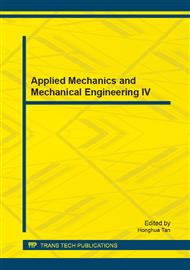p.418
p.424
p.428
p.432
p.440
p.449
p.455
p.462
p.469
Effect of Die Properties on Bending Characteristics of Push-Through Bending of Aluminum Extrusion Section
Abstract:
In our previous study, we reduced the slide marks on material surfaces by optimizing the lubricant for push-through bending. In this study, we investigate contact conditions of material deformation in dies during push-through bending. We also attempt to reduce slide marks by investigating the die material, die surface treatment of the die, and roller die set and to clarify the following. Bending deformation and flange wrinkling occur in fixed dies during push-through bending. Sliding between the material and the die begins inside the fixed die. A cemented carbide die is excellent for obtaining ideal surface roughness of the slide marks. Hard metal dies tend to have excellent sliding characteristics. Cold die steel (SKD11) and high-speed steel (SKH51) have almost equal hardness, and their qualities exist harmoniously between the bending member and the die material without the above relationship. When we treat the die surface or use the above dies, roughness of slide marks increases. The die-surface roughnesses in Diamond-Like Carbon (DLC) processing and Toyota Diffusion Coating Process (TD) are minimal, and the surfaces of their bending members are smooth. Furthermore, their efficiency is nearly equal to that of cemented carbide dies without surface treatment. Using a roller die effectively reduces slide marks. However, a roller die contacts the bending member locally, and the contact pressure is higher than with a normal die. Thus, a roller die is inferior to a normal die in its curvature, deformation, and flange wrinkling. The structure of the roller die is most suitable for parts with small curvatures.
Info:
Periodical:
Pages:
440-448
Citation:
Online since:
October 2013
Authors:
Price:
Сopyright:
© 2014 Trans Tech Publications Ltd. All Rights Reserved
Share:
Citation:


